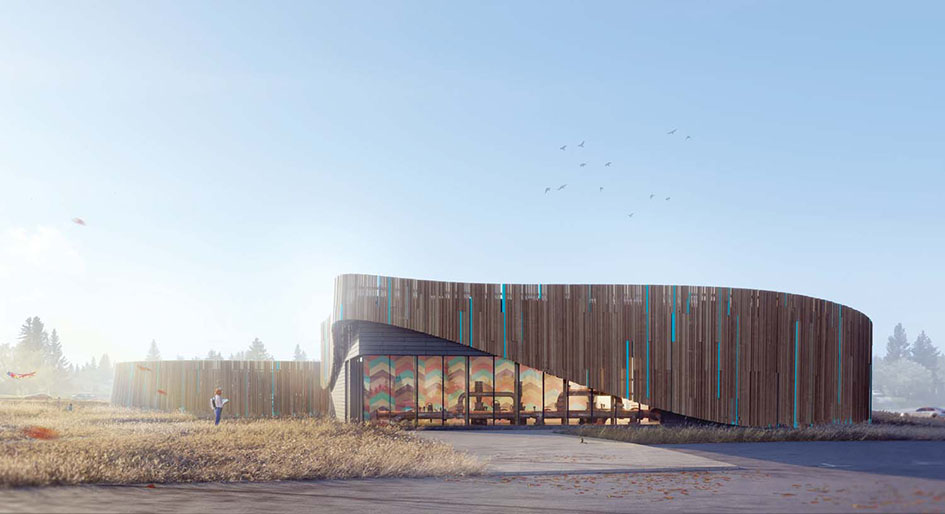Taza is the largest First Nation development in Canada, located in Calgary, Alberta. The project is actively putting sustainable practices at the forefront of its design and building guidelines. This includes honouring and respecting the land based on Tsuut’ina culture.
Taza reflects the vision of the Tsuut’ina Nation to be North America’s Indigenous leader of carbon-neutral/near net-zero energy buildings by 2030. The land, water, air, animals and plant life must be protected, restored and enhanced throughout all the built environments on this territory. This includes a long-term plan to reach overall carbon neutrality across all sections, including all forms of energy, transition, and energy grid development/storage and an investigation of carbon capture targets for the Nation.
Development tenants will be held to these same principles and are encouraged to align efforts with reputable rating systems such as LEED, Living Building Challenge, WELL, Passive House, Zero Carbon Building Standard, Zero Energy Certification, SITES, and more.
The Taza design guidelines take a proactive approach to sustainable, low-impact development, incorporating six categories for consideration. These categories include energy and carbon, waste management, water and stormwater management, transportation, urban agriculture, and health and wellbeing. These environmental endeavours are further bolstered by a series of Tsuut’ina development laws and civic procedures parallel to those found in other major municipalities, reinforcing a high calibre of development and business operation.
A few ways that Taza plans on leading by example for future tenants include implementing sustainable practices such as developing a meandering flow of wetlands instead of using a traditional stormwater pond, utilizing reclaimed timber where possible and incorporating urban agriculture throughout the development. The use of urban agriculture includes medicinal and herbal plants that can be grown in planter boxes.
The future Taza Water Reservoir and Pumphouse design are some of the best examples of Taza’s commitment to its sustainable strategy. In many ways, the reservoir represents returning the precious water resource, ultimately celebrating the cultural connection. The underground portion of the reservoir is secured by an arrayed wooden structure that resembles a beaver dam in its design. This intention responds to the Tsuut’ina Nation being known as the ‘beaver people.’
In addition to providing the necessary security, the structure allows an opportunity to integrate solar panels and act as a bold gateway into the development. The integration of the solar fence within the landscape further speaks to the Tsuut’ina understanding of the interconnectivity between all living beings, the land, places of meaning, and neighbouring communities. Finally, using the site’s unshaded southern exposure for solar rays expresses the Tsuut’ina value of respecting future generations’ resources.
The pumphouse building adjacent to the reservoir aims to be net-zero, which will be achieved using appropriate wall assemblies and solar panels for the pumphouse building’s electrical requirements. Additionally, the pumphouse structure will consist of glulam beams and columns, while the roof decking will be made of tongue and groove wood boards.
The design team at Zeidler Architecture also investigated technologies for the water pumps that will create more efficient operations to address the energy and water consumption challenges further. Finally, a visual feedback component will be integrated into the project, which will educate site visitors about water conservation at the development. This area also provides an opportunity for a permanent installation by a Tsuut’ina artist.
The water reservoir will provide a consistent, economic, and safe drinking water supply and provide water for fire protection to the development and the Tsuut’ina Nation. The water reservoir will replace ageing infrastructure and facilitate the Tsuut’ina Nation’s current utilities within their infrastructure improvement program. Finally, the water reservoir and pumphouse act on the opportunity to contribute to the liveliness and economic success of the public realm by creating an interesting, engaging, and exciting destination.
When completed, the 1,200 acres of the Taza development will house retail outlets, business parks and entertainment facilities.








